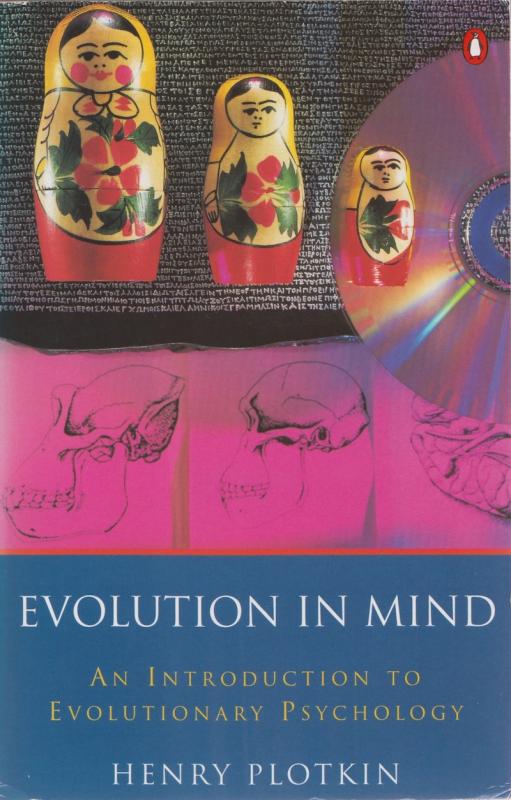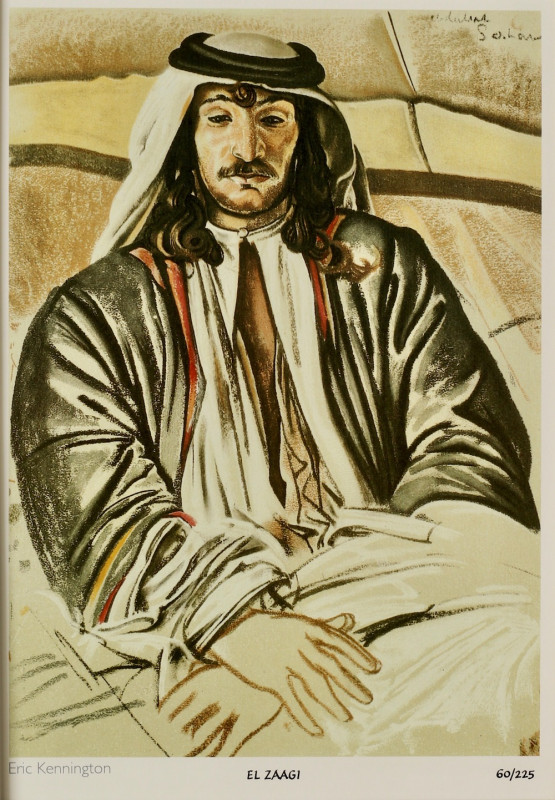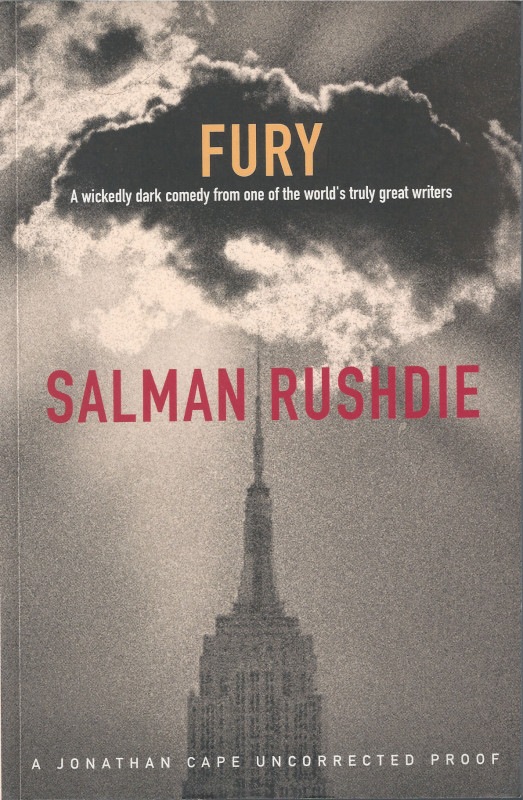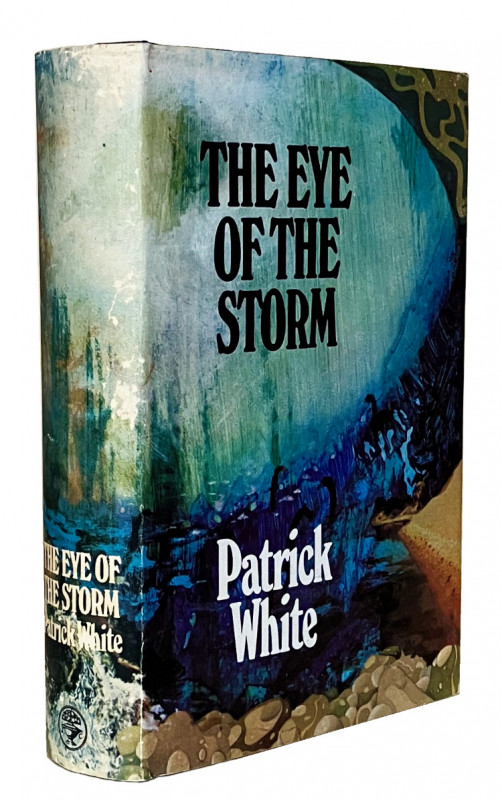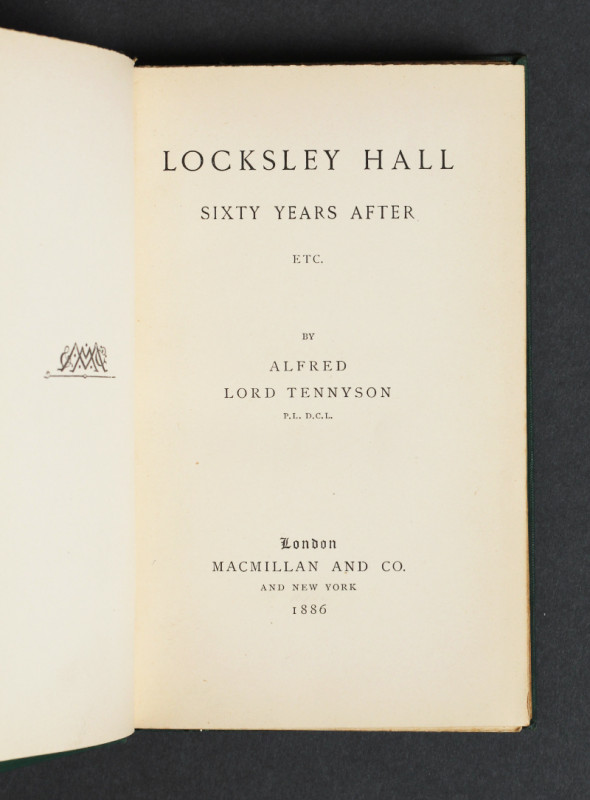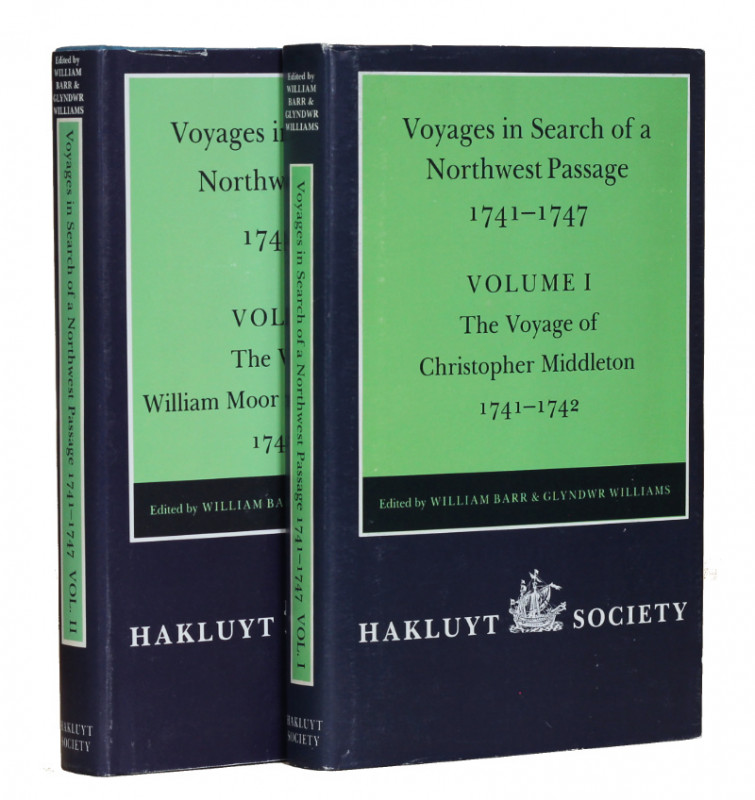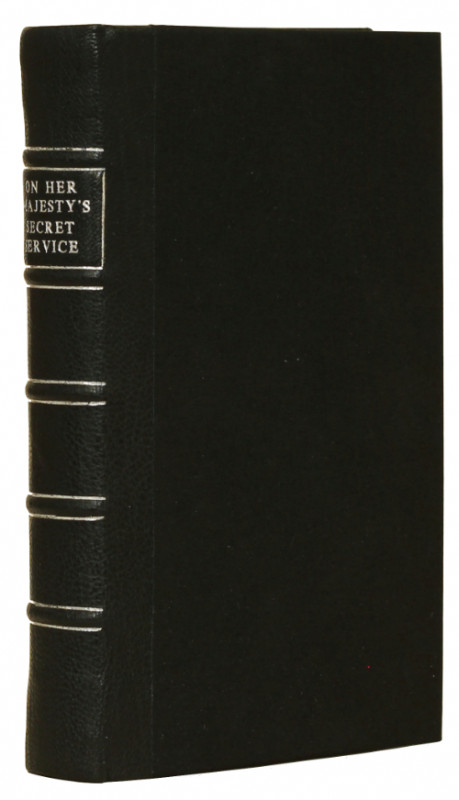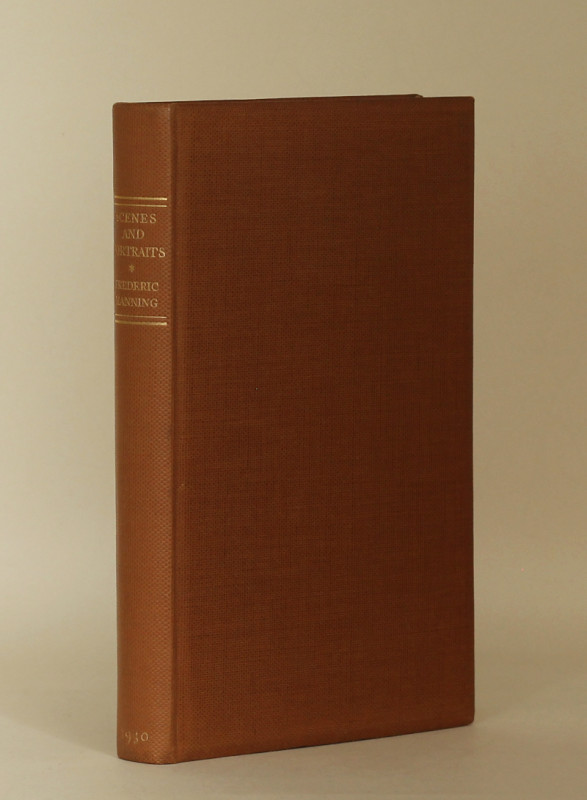A Narrative of Dr. Livingston’s Discoveries in South-Central Africa, from 1849 to 1856... [from the library of Quentin Keynes]
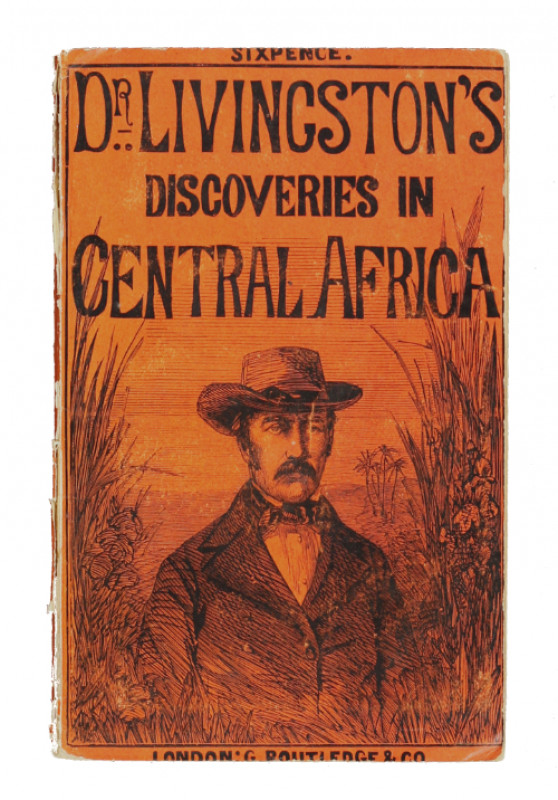

Book Description
THE RARE AND CONTROVERSIAL FIRST BRITISH ACCOUNT IN BOOK FORM OF LIVINGSTONE’S TRAVELS – DENOUNCED BY HIM AS ‘A GROSS DECEPTION’ – IN THE ORIGINAL WRAPPERS
[full title:] A Narrative of Dr. Livingston’s Discoveries in South-Central Africa, from 1849 to 1856. Reprinted by Arrangement from the “British Banner” Newspaper.
Octavo (161 x 101mm), pp. [i]-iv, [5]-64. Wood-engraved folding map by and after E. Whimper. (Scattered and very light spotting, folding map slightly creased and with clean tear on fold.) Original orange card wrappers with wood-engraved illustration on upper cover and publisher’s letterpress advertisement on lower wrapper. (Wrappers slightly rubbed and creased, splitting on joints, some chipping causing small losses on spine, as often.) A very good copy in the original wrappers.
Provenance: Quentin George Keynes FRGS (1921-2003).
[full title:] A Narrative of Dr. Livingston’s Discoveries in South-Central Africa, from 1849 to 1856. Reprinted by Arrangement from the “British Banner” Newspaper.
Octavo (161 x 101mm), pp. [i]-iv, [5]-64. Wood-engraved folding map by and after E. Whimper. (Scattered and very light spotting, folding map slightly creased and with clean tear on fold.) Original orange card wrappers with wood-engraved illustration on upper cover and publisher’s letterpress advertisement on lower wrapper. (Wrappers slightly rubbed and creased, splitting on joints, some chipping causing small losses on spine, as often.) A very good copy in the original wrappers.
Provenance: Quentin George Keynes FRGS (1921-2003).
Dealer Notes
First edition. David Livingstone (or Livingston, as he often styled himself before he became a public figure) returned to Britain on 12 December 1856 to a hero’s welcome, following his successful crossing of the African continent. ‘Within days [...] the [Royal Geographical Society] held a special meeting, on 15 December, to bestow on him its gold medal; on the next day the [London Missionary Society] held a reception for him, chaired by Lord Shaftesbury’ (ODNB). Livingstone and John Murray III had made arrangements for the publication of an account of his travels before Livingstone had even returned home, and at the beginning of 1857 he had started work on the book that would be published in November of that year under the title Missionary Travels and Researches in South Africa. However, the great public interest in Livingstone and his explorations evidently persuaded Routledge that there was an appetite and a market for a popular publication, as they stated in the preface to this volume: ‘[t]he interest awakened by the return of the Missionary wanderer to his native land, after an absence of fifteen years, is scarcely second to the anxiety manifested to obtain information as to the actual discoveries which have been made in the hitherto untracked region of Central South Africa’ (p. [iii]). Therefore, the publishers anticipated that the ‘world will accept gladly the further history upon which the great explorer is now engaged, and the public taste will, in the meantime, be stimulated by the pleasing and naturally recorded narrative here presented’ and explained that the work – ‘the first authentic narrative of the important explorations of the Rev. Dr. Livingston’ – is composed of articles previously published in the newspaper The British Banner, ‘in whose columns, in detached portions, this remarkable history first appeared’ (p. [iii]).
The preface is dated ‘January, 1857’, and advertisements were published in that month which stated that the book was ‘illustrated with a map revised by [Livingstone], indicating his precise route through the hitherto untracked districts of Central South Africa’ (see, for example, The Times, issue 22591 (30 January 1857), p. 9). These advertisements provoked a furious response from Livingstone, and on 28 January 1857 he wrote a letter addressed to the editor of The Times, which described the book as ‘an unblushing attempt on the part of a publisher to get money by false pretences’ and concluded with the words ‘[i]n Africa we are often troubled by hyaenas – low, dastardly, greedy hideous brutes – much given to cowardly filtching, when very troublesome at Kolobeng I used to bait a gun with a piece of meat at the end of our house and the fools shot themselves. Now if you will kindly publish this note in the “Times” I am sure your paper will perform the service of the baited gun for every one will soon know that my travels are not published by Routledge & Co’ (sale of ‘Fine Books, Manuscripts, Atlases & Historical Photographs’, Bonhams, London, 20 June 2018, lot 99). This letter appears to have been sent to Livingstone’s publishers for approval before publication, and they evidently felt that it was too strong and suppressed the text (the manuscript is docketed ‘Never sent’). In its stead, a slightly more temperate missive was published in The Times on 31 January 1857, stating that ‘[a]s I have not only had no hand in this work, but actually know nothing about it, I appeal to you for aid to protect the public from a gross deception, and me from injustice and injury. I am at present busily engaged in preparing a narrative of my travels (to be published by Mr. Murray), and Mr. John Arrowsmith is laying down a map from my observations, so that I hope soon to satisfy public curiosity. I have certainly given no other person either the information or the authority to justify such an announcement as that of Messrs Routledge and Co.; and assuredly no honest man would distort the fact of having pointed out on a faulty map my line of route to friends in private into “a map revised by himself”’ (issue 22592, p. 7).
It seems, however, that Livingstone’s description of the present publication as a ‘gross deception’ was misleading, as the publishers of The British Banner sought to clarify in a letter published in The Times on 2 February 1857: ‘[d]uring the last three weeks a Narrative of Dr. Livingston’s Missionary Journeys and Discoveries in Central South Africa has been appearing in the columns of the British Banner newspaper. This narrative has been compiled from authorized documents, and with it has been published an illustrative map which Dr. Livingston saw when it was submitted by the engraver. Many applications having been made for the republication of this series of papers in a permanent form, an arrangement was effected with Messrs. Routledge and Co. to publish it [...]. The advertisement announcing this work does not contain a reference to the newspaper, and thus arises the misapprehension. We have explained the matter to Dr. Livingston this morning, and the future advertisements will appear in the altered form’ (issue 22593, p. 5).
The following day the publisher visited Livingstone, presumably to reassure him, as Livingstone wrote to John Murray on 4 February 1857: ‘Mr. Routledge and a Mr. Pardoe called here yesterday morning with the pamphlet, I refused to look at it, though they pretended it was simply that I might see that nothing to my prejudice appeared on the title page’. Undeterred by Livingstone’s antipathy, Routledge hinted that he might donate to the ‘Testimonial Fund’ established to benefit Livingstone ‘if I would only give him my countenance[.] I replied, satisfy Mr Murray and you will thereby satisfy me’. Livingstone remained unmoved, telling Routledge that ‘I have abundant evidence that people generally believe this narrative is by me’, before turning his back on the publisher (Livingstone, David, 1813-1873. ‘Letter to John Murray III, 4 February 1857.’ Livingstone Online. Adrian S. Wisnicki and Megan Ward, dirs. 2024. Web. 12 February 2024). The problem of unauthorised accounts of his travels continued to vex Livingstone in the following months, and he cited A Narrative of Dr. Livingston’s Discoveries in South-Central Africa, from 1849 to 1856 in a letter to his publishers of 15 March 1857, complaining that he was so demoralised by these accounts that he might well abandon his own book and return to Africa, ‘where I may be able to do some good [rather] than waste time in contending with these heartless pirates’ (sale of ‘Fine Books, Manuscripts, Atlases & Historical Photographs’, Bonhams, London, 20 June 2018, lot 101).
A Narrative of Dr. Livingston’s Discoveries in South-Central Africa, from 1849 to 1856 was the first account of Livingstone’s travels in book-form to be published in Great Britain, preceded only by Livingstone’s fourteen-page pamphlet Notes of a Tour to the River Sesheke, in the Region North of Lake Ngami, which was published at Cape Town in 1852 (possibly at the author’s expense) and South-Central Africa and its Explorer, being the Report of a Meeting Held in the Commercial Rooms, Cape Town, November 12, 1856, in Honour of the Rev. Dr. Livingston; Reprinted from the “South African Commercial Advertiser and Cape Town Mail”, a slim work of 41 pages published at Cape Town in 1856. Perhaps due to its fragile and ephemeral form, A Narrative of Dr. Livingston’s Discoveries in South-Central Africa, from 1849 to 1856 is a rare work, and we can only trace one copy of it in Anglo-American auction records since 1975.
The present copy was previously in the noted collection of the explorer and bibliophile Quentin Keynes, who travelled extensively in Africa throughout the second half of the twentieth century, and collected a remarkable library of books and manuscripts relating to the exploration of Africa, particularly during the nineteenth century. Some of these works provided the basis for Keynes’s Roxburghe Club book The Search for the Source of the Nile: Correspondence between Captain Richard Burton, Captain John Speke and Others, from Burton’s Unpublished East African Letter Book; together with Other Related Letters and Papers (London, 1999) and his collection was also a resource that he drew upon for his own travels in Africa. For example, in 1958, the centenary of Livingstone’s expedition up the Zambezi River, Keynes retraced Livingstone’s route and identified baobab tree into the internal cavity of which Livingstone had carved his initials on 16 September 1858. The tree – which had not previously been located – ‘was soon afterwards declared by the Portuguese government of Mozambique to be an historical monument in honour of David Livingstone’ (S.D. Keynes, Quentin Keynes: Explorer, Film-Maker, Lecturer and Book-Collector 1921-2003 (Cambridge, 2004), p. 217).
Casada, Dr. David Livingstone and Sir Henry Morton Stanley, 34; South African Bibliography III, p. 430.
* * *
This is one of the books from our recent Africa catalogue, which you may enjoy browsing. Catalogue available in our PBFA profile, or directly on www.typeandforme.com.
Please do not hesitate to contact us with any enquiries.
The preface is dated ‘January, 1857’, and advertisements were published in that month which stated that the book was ‘illustrated with a map revised by [Livingstone], indicating his precise route through the hitherto untracked districts of Central South Africa’ (see, for example, The Times, issue 22591 (30 January 1857), p. 9). These advertisements provoked a furious response from Livingstone, and on 28 January 1857 he wrote a letter addressed to the editor of The Times, which described the book as ‘an unblushing attempt on the part of a publisher to get money by false pretences’ and concluded with the words ‘[i]n Africa we are often troubled by hyaenas – low, dastardly, greedy hideous brutes – much given to cowardly filtching, when very troublesome at Kolobeng I used to bait a gun with a piece of meat at the end of our house and the fools shot themselves. Now if you will kindly publish this note in the “Times” I am sure your paper will perform the service of the baited gun for every one will soon know that my travels are not published by Routledge & Co’ (sale of ‘Fine Books, Manuscripts, Atlases & Historical Photographs’, Bonhams, London, 20 June 2018, lot 99). This letter appears to have been sent to Livingstone’s publishers for approval before publication, and they evidently felt that it was too strong and suppressed the text (the manuscript is docketed ‘Never sent’). In its stead, a slightly more temperate missive was published in The Times on 31 January 1857, stating that ‘[a]s I have not only had no hand in this work, but actually know nothing about it, I appeal to you for aid to protect the public from a gross deception, and me from injustice and injury. I am at present busily engaged in preparing a narrative of my travels (to be published by Mr. Murray), and Mr. John Arrowsmith is laying down a map from my observations, so that I hope soon to satisfy public curiosity. I have certainly given no other person either the information or the authority to justify such an announcement as that of Messrs Routledge and Co.; and assuredly no honest man would distort the fact of having pointed out on a faulty map my line of route to friends in private into “a map revised by himself”’ (issue 22592, p. 7).
It seems, however, that Livingstone’s description of the present publication as a ‘gross deception’ was misleading, as the publishers of The British Banner sought to clarify in a letter published in The Times on 2 February 1857: ‘[d]uring the last three weeks a Narrative of Dr. Livingston’s Missionary Journeys and Discoveries in Central South Africa has been appearing in the columns of the British Banner newspaper. This narrative has been compiled from authorized documents, and with it has been published an illustrative map which Dr. Livingston saw when it was submitted by the engraver. Many applications having been made for the republication of this series of papers in a permanent form, an arrangement was effected with Messrs. Routledge and Co. to publish it [...]. The advertisement announcing this work does not contain a reference to the newspaper, and thus arises the misapprehension. We have explained the matter to Dr. Livingston this morning, and the future advertisements will appear in the altered form’ (issue 22593, p. 5).
The following day the publisher visited Livingstone, presumably to reassure him, as Livingstone wrote to John Murray on 4 February 1857: ‘Mr. Routledge and a Mr. Pardoe called here yesterday morning with the pamphlet, I refused to look at it, though they pretended it was simply that I might see that nothing to my prejudice appeared on the title page’. Undeterred by Livingstone’s antipathy, Routledge hinted that he might donate to the ‘Testimonial Fund’ established to benefit Livingstone ‘if I would only give him my countenance[.] I replied, satisfy Mr Murray and you will thereby satisfy me’. Livingstone remained unmoved, telling Routledge that ‘I have abundant evidence that people generally believe this narrative is by me’, before turning his back on the publisher (Livingstone, David, 1813-1873. ‘Letter to John Murray III, 4 February 1857.’ Livingstone Online. Adrian S. Wisnicki and Megan Ward, dirs. 2024. Web. 12 February 2024). The problem of unauthorised accounts of his travels continued to vex Livingstone in the following months, and he cited A Narrative of Dr. Livingston’s Discoveries in South-Central Africa, from 1849 to 1856 in a letter to his publishers of 15 March 1857, complaining that he was so demoralised by these accounts that he might well abandon his own book and return to Africa, ‘where I may be able to do some good [rather] than waste time in contending with these heartless pirates’ (sale of ‘Fine Books, Manuscripts, Atlases & Historical Photographs’, Bonhams, London, 20 June 2018, lot 101).
A Narrative of Dr. Livingston’s Discoveries in South-Central Africa, from 1849 to 1856 was the first account of Livingstone’s travels in book-form to be published in Great Britain, preceded only by Livingstone’s fourteen-page pamphlet Notes of a Tour to the River Sesheke, in the Region North of Lake Ngami, which was published at Cape Town in 1852 (possibly at the author’s expense) and South-Central Africa and its Explorer, being the Report of a Meeting Held in the Commercial Rooms, Cape Town, November 12, 1856, in Honour of the Rev. Dr. Livingston; Reprinted from the “South African Commercial Advertiser and Cape Town Mail”, a slim work of 41 pages published at Cape Town in 1856. Perhaps due to its fragile and ephemeral form, A Narrative of Dr. Livingston’s Discoveries in South-Central Africa, from 1849 to 1856 is a rare work, and we can only trace one copy of it in Anglo-American auction records since 1975.
The present copy was previously in the noted collection of the explorer and bibliophile Quentin Keynes, who travelled extensively in Africa throughout the second half of the twentieth century, and collected a remarkable library of books and manuscripts relating to the exploration of Africa, particularly during the nineteenth century. Some of these works provided the basis for Keynes’s Roxburghe Club book The Search for the Source of the Nile: Correspondence between Captain Richard Burton, Captain John Speke and Others, from Burton’s Unpublished East African Letter Book; together with Other Related Letters and Papers (London, 1999) and his collection was also a resource that he drew upon for his own travels in Africa. For example, in 1958, the centenary of Livingstone’s expedition up the Zambezi River, Keynes retraced Livingstone’s route and identified baobab tree into the internal cavity of which Livingstone had carved his initials on 16 September 1858. The tree – which had not previously been located – ‘was soon afterwards declared by the Portuguese government of Mozambique to be an historical monument in honour of David Livingstone’ (S.D. Keynes, Quentin Keynes: Explorer, Film-Maker, Lecturer and Book-Collector 1921-2003 (Cambridge, 2004), p. 217).
Casada, Dr. David Livingstone and Sir Henry Morton Stanley, 34; South African Bibliography III, p. 430.
* * *
This is one of the books from our recent Africa catalogue, which you may enjoy browsing. Catalogue available in our PBFA profile, or directly on www.typeandforme.com.
Please do not hesitate to contact us with any enquiries.
Author
LIVINGSTONE, David –
Date
1857
Publisher
London and New York: Reed and Pardon for Routledge and Co.
Friends of the PBFA
For £10 get free entry to our fairs, updates from the PBFA and more.
Please email info@pbfa.org for more information
